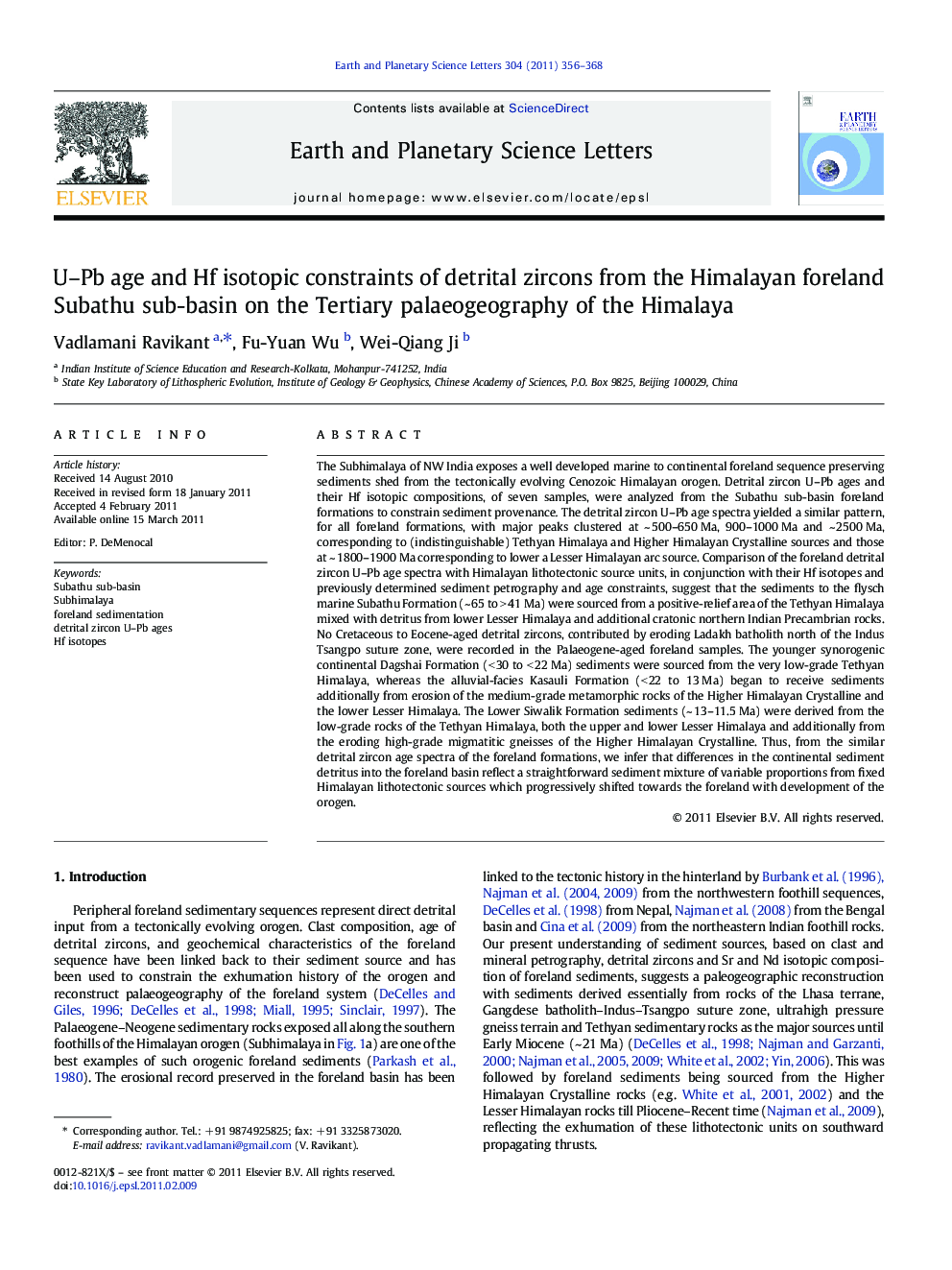| کد مقاله | کد نشریه | سال انتشار | مقاله انگلیسی | نسخه تمام متن |
|---|---|---|---|---|
| 4678122 | 1634831 | 2011 | 13 صفحه PDF | دانلود رایگان |

The Subhimalaya of NW India exposes a well developed marine to continental foreland sequence preserving sediments shed from the tectonically evolving Cenozoic Himalayan orogen. Detrital zircon U–Pb ages and their Hf isotopic compositions, of seven samples, were analyzed from the Subathu sub-basin foreland formations to constrain sediment provenance. The detrital zircon U–Pb age spectra yielded a similar pattern, for all foreland formations, with major peaks clustered at ~ 500–650 Ma, 900–1000 Ma and ~ 2500 Ma, corresponding to (indistinguishable) Tethyan Himalaya and Higher Himalayan Crystalline sources and those at ~ 1800–1900 Ma corresponding to lower a Lesser Himalayan arc source. Comparison of the foreland detrital zircon U–Pb age spectra with Himalayan lithotectonic source units, in conjunction with their Hf isotopes and previously determined sediment petrography and age constraints, suggest that the sediments to the flysch marine Subathu Formation (~ 65 to > 41 Ma) were sourced from a positive-relief area of the Tethyan Himalaya mixed with detritus from lower Lesser Himalaya and additional cratonic northern Indian Precambrian rocks. No Cretaceous to Eocene-aged detrital zircons, contributed by eroding Ladakh batholith north of the Indus Tsangpo suture zone, were recorded in the Palaeogene-aged foreland samples. The younger synorogenic continental Dagshai Formation (< 30 to < 22 Ma) sediments were sourced from the very low-grade Tethyan Himalaya, whereas the alluvial-facies Kasauli Formation (< 22 to 13 Ma) began to receive sediments additionally from erosion of the medium-grade metamorphic rocks of the Higher Himalayan Crystalline and the lower Lesser Himalaya. The Lower Siwalik Formation sediments (~ 13–11.5 Ma) were derived from the low-grade rocks of the Tethyan Himalaya, both the upper and lower Lesser Himalaya and additionally from the eroding high-grade migmatitic gneisses of the Higher Himalayan Crystalline. Thus, from the similar detrital zircon age spectra of the foreland formations, we infer that differences in the continental sediment detritus into the foreland basin reflect a straightforward sediment mixture of variable proportions from fixed Himalayan lithotectonic sources which progressively shifted towards the foreland with development of the orogen.
Research highlights
► Eocene — Late Oligocene sediments sourced from mixed Himalayan and Indian craton.
► Continental foreland formations show no change in major Himalayan sediment sources.
► Sources shifted to the Higher Himalayan Crystalline rocks from mid-Miocene.
► Distinct Lesser Himalayan Palaeoproterozoic arc sources in Miocene sediments.
► The absence of Gangdese batholith detritus suggests minor Transhimalayan sources.
Journal: Earth and Planetary Science Letters - Volume 304, Issues 3–4, 15 April 2011, Pages 356–368